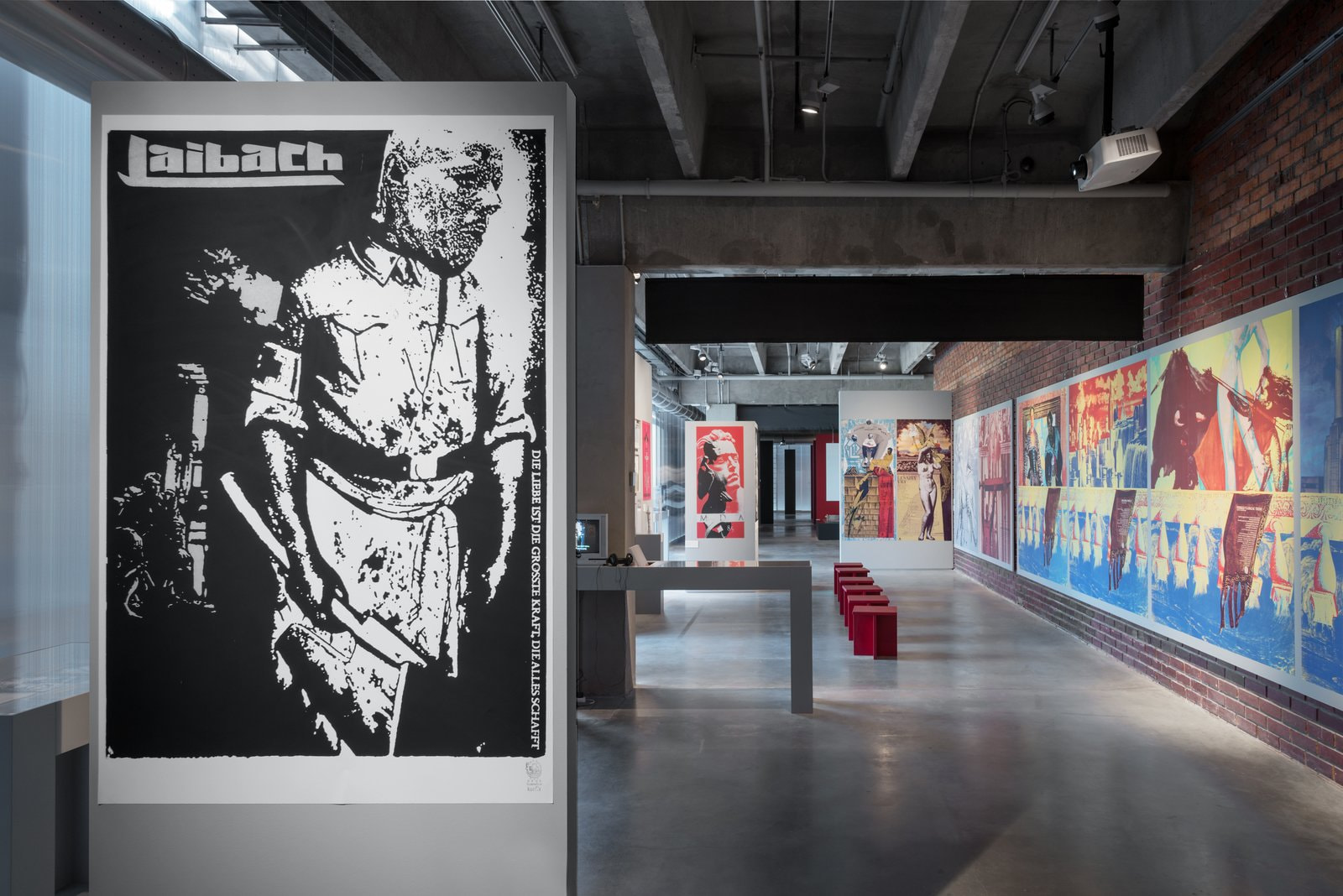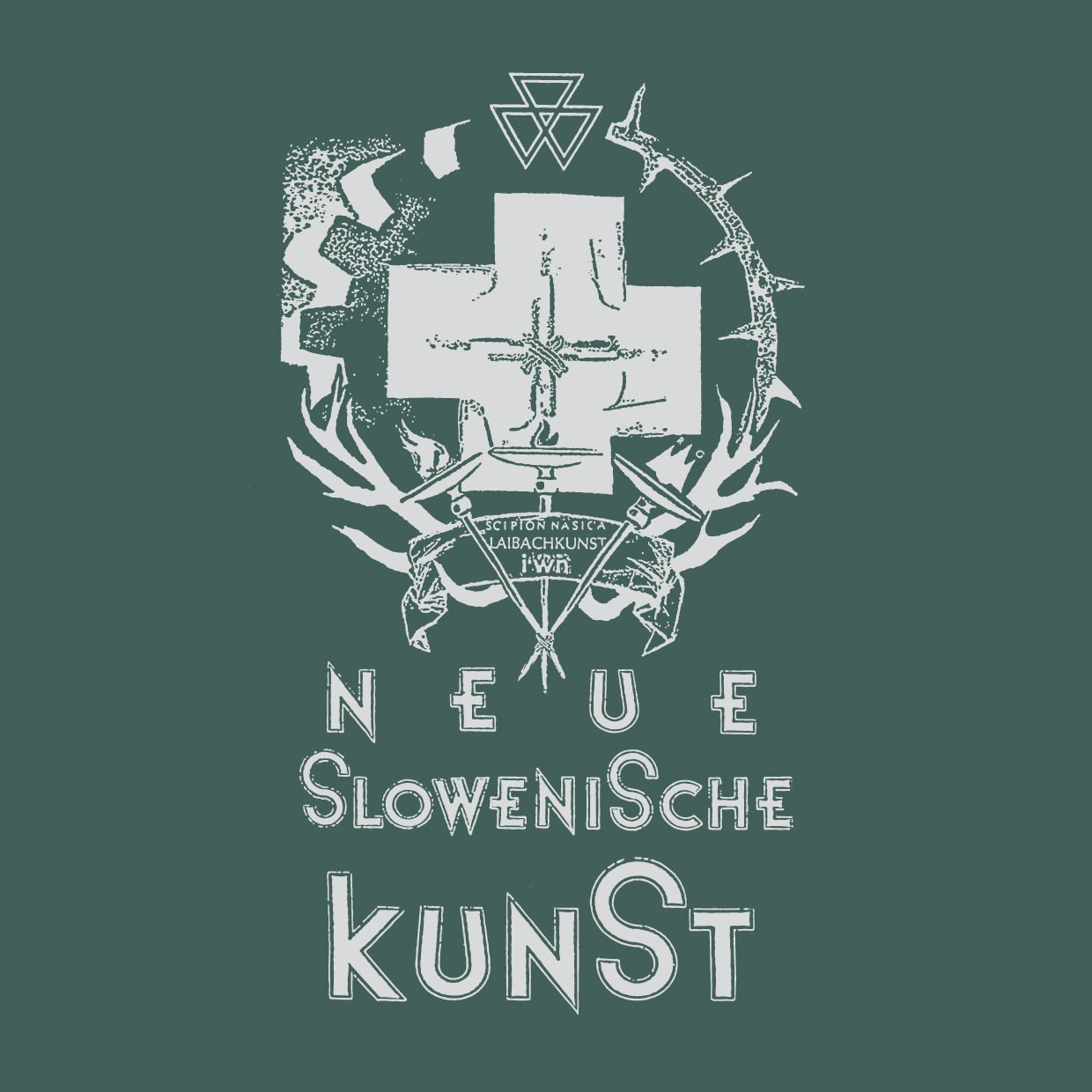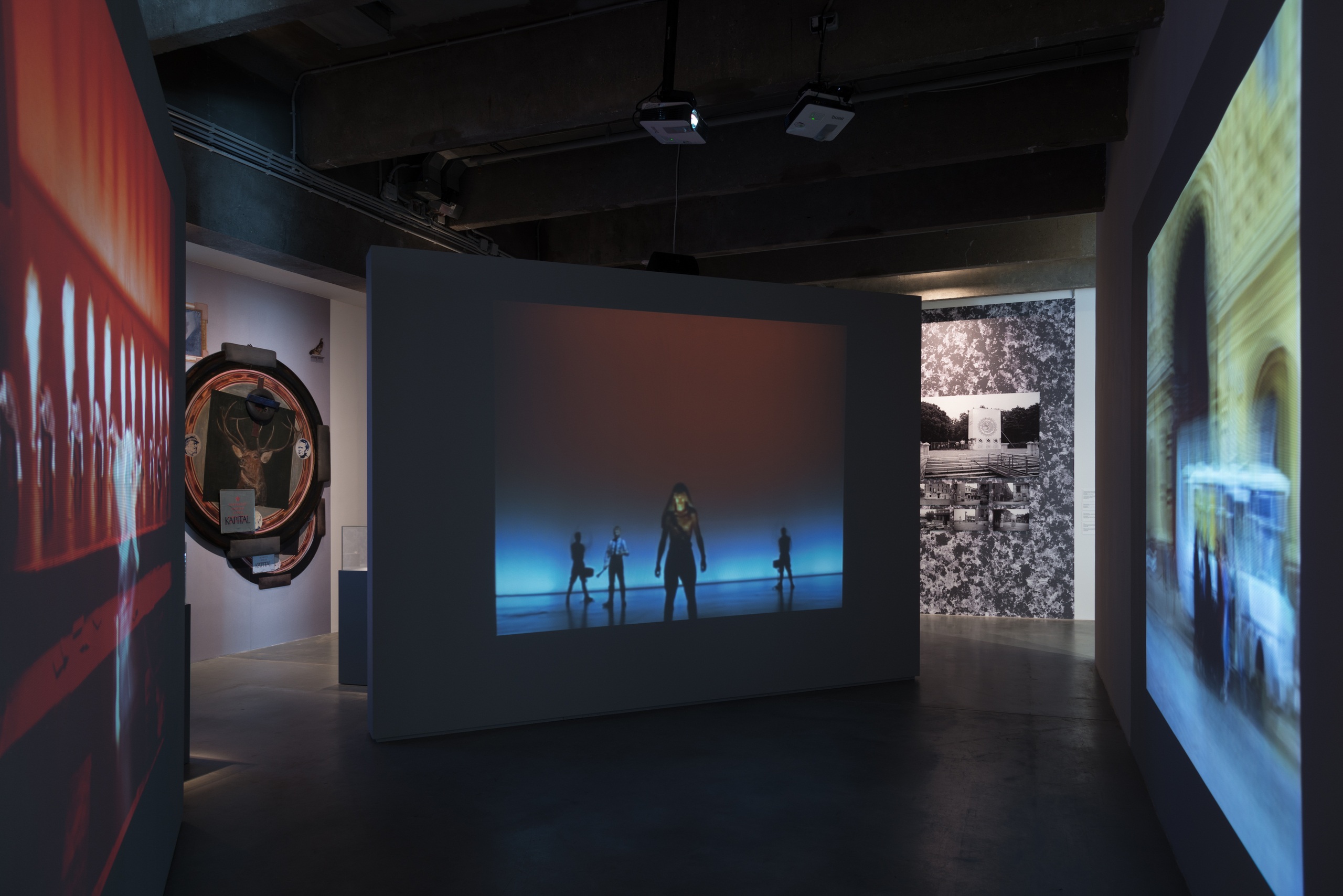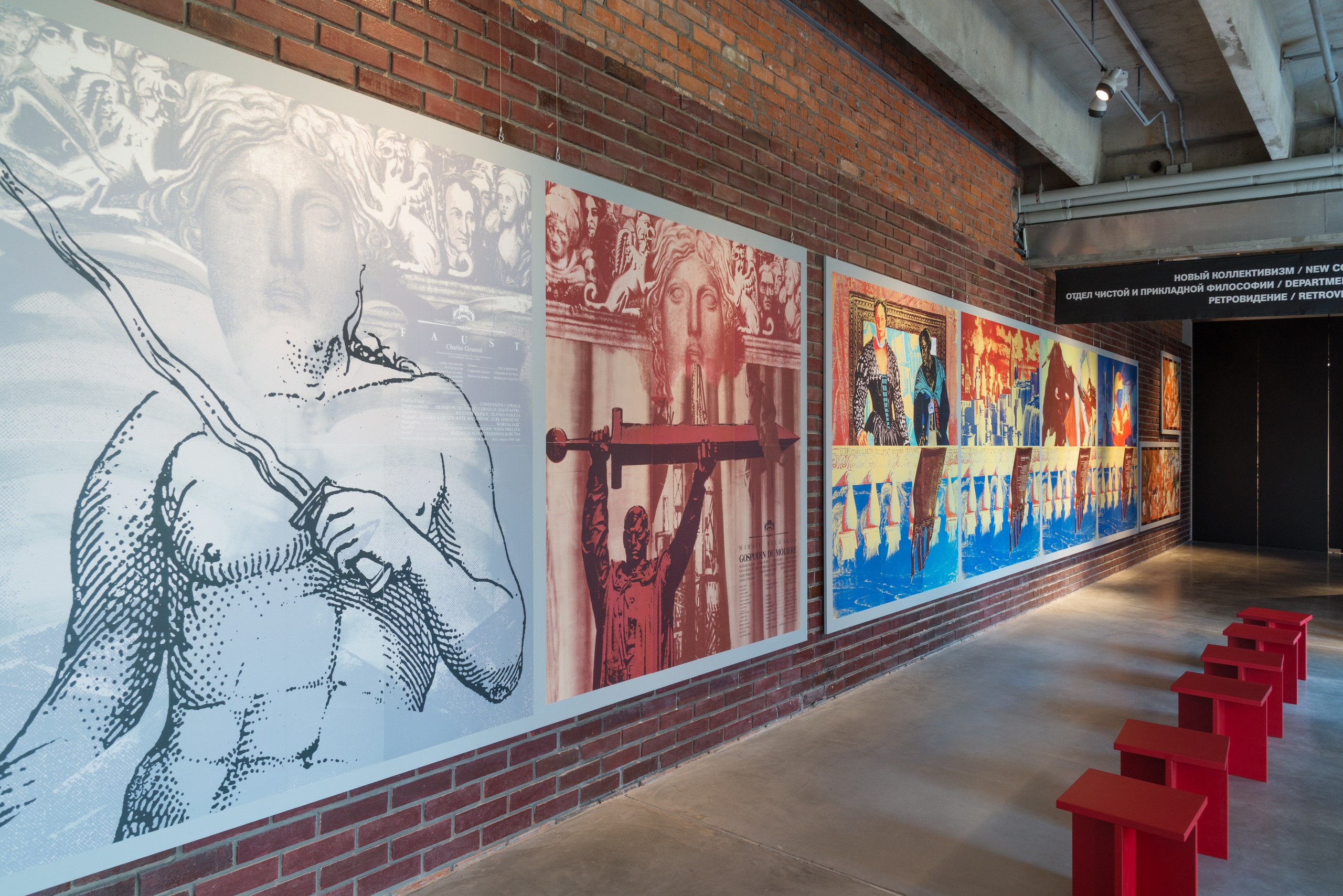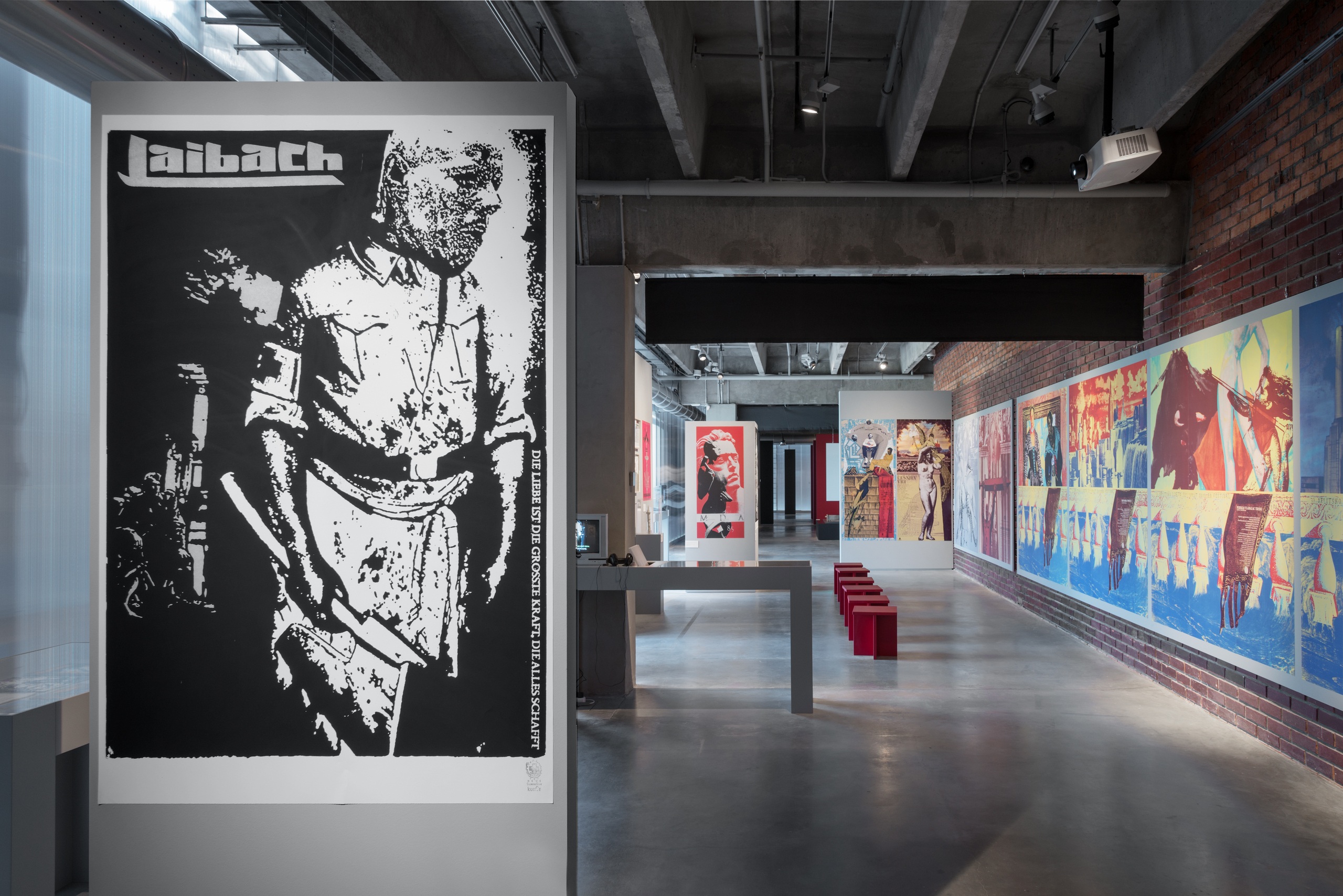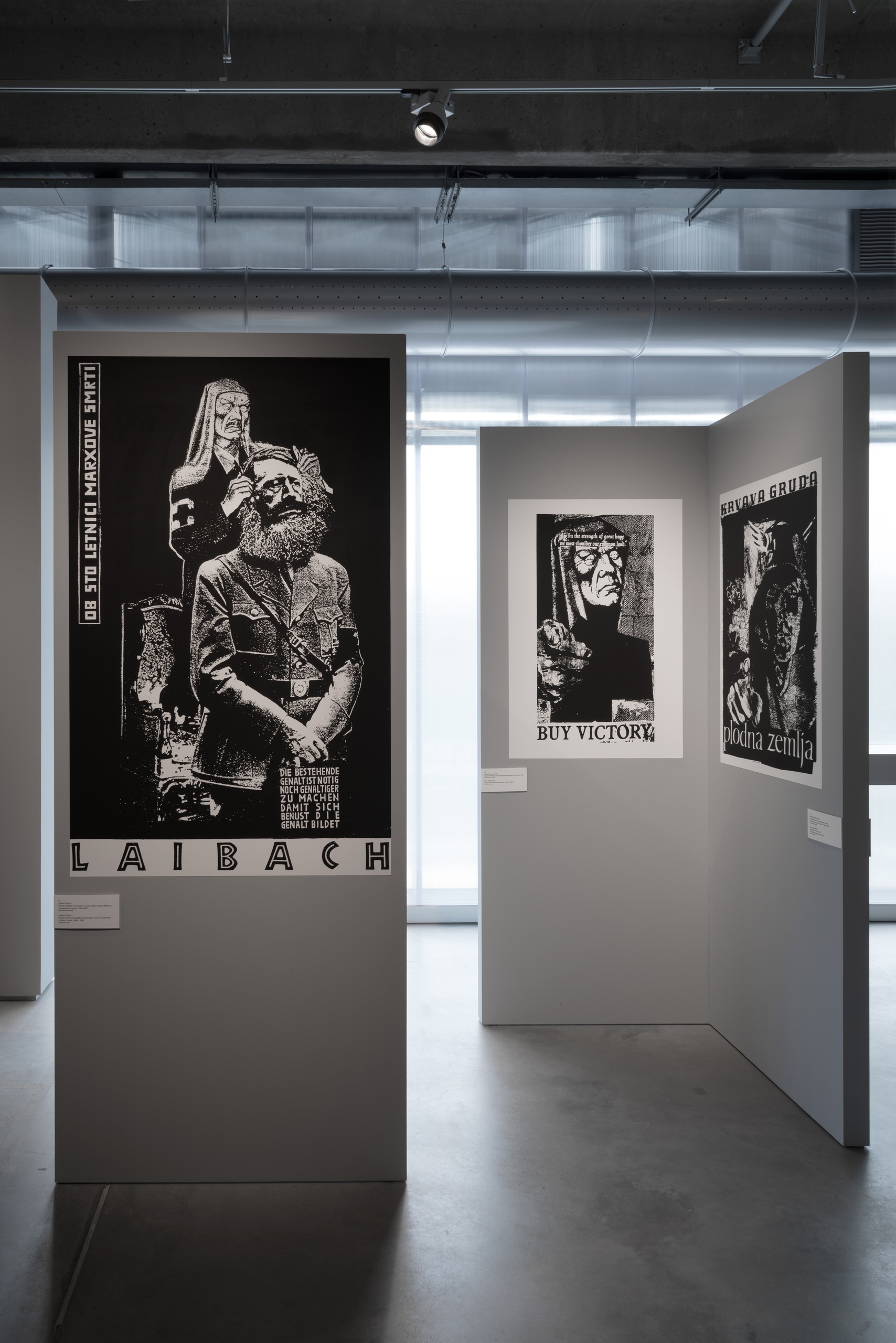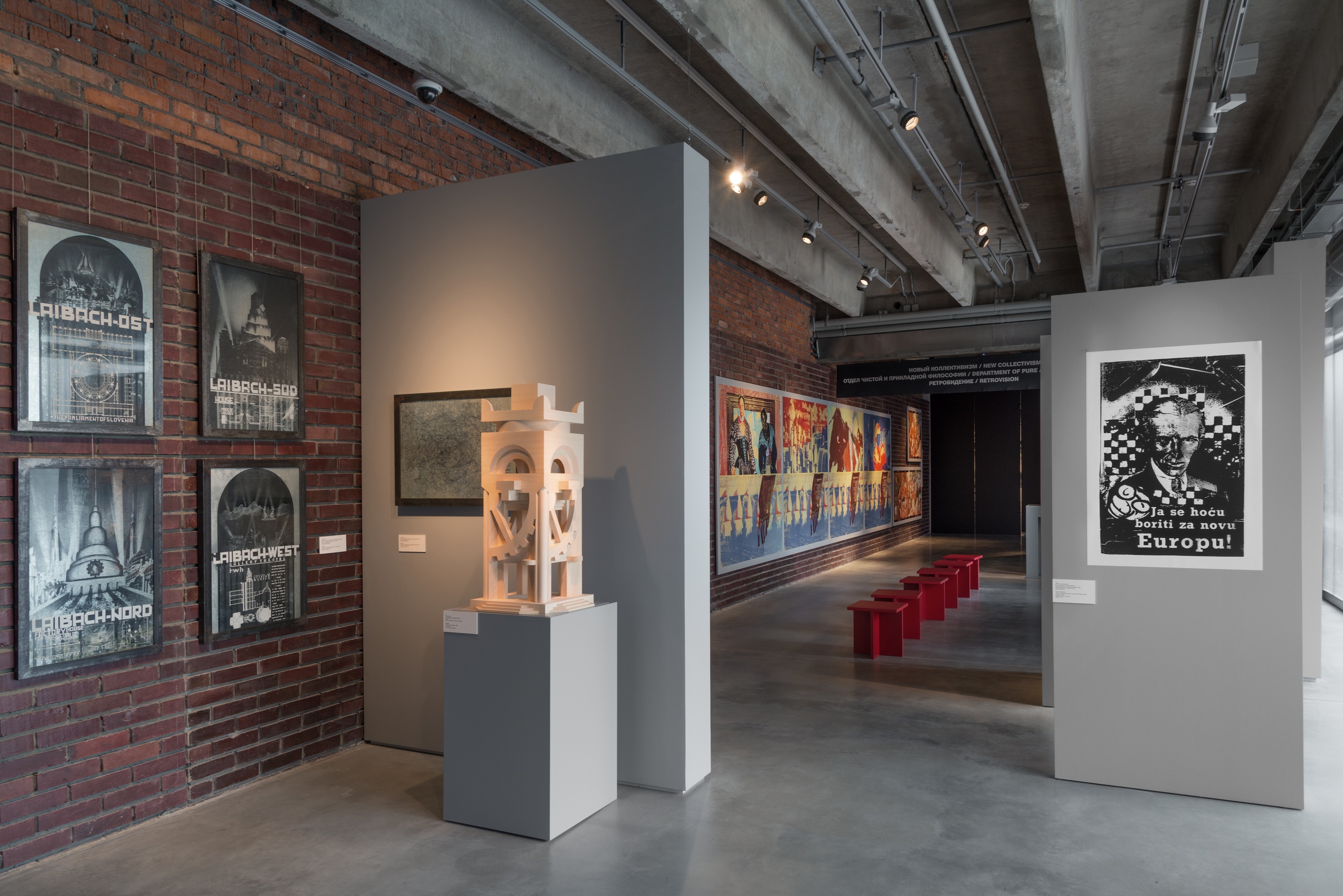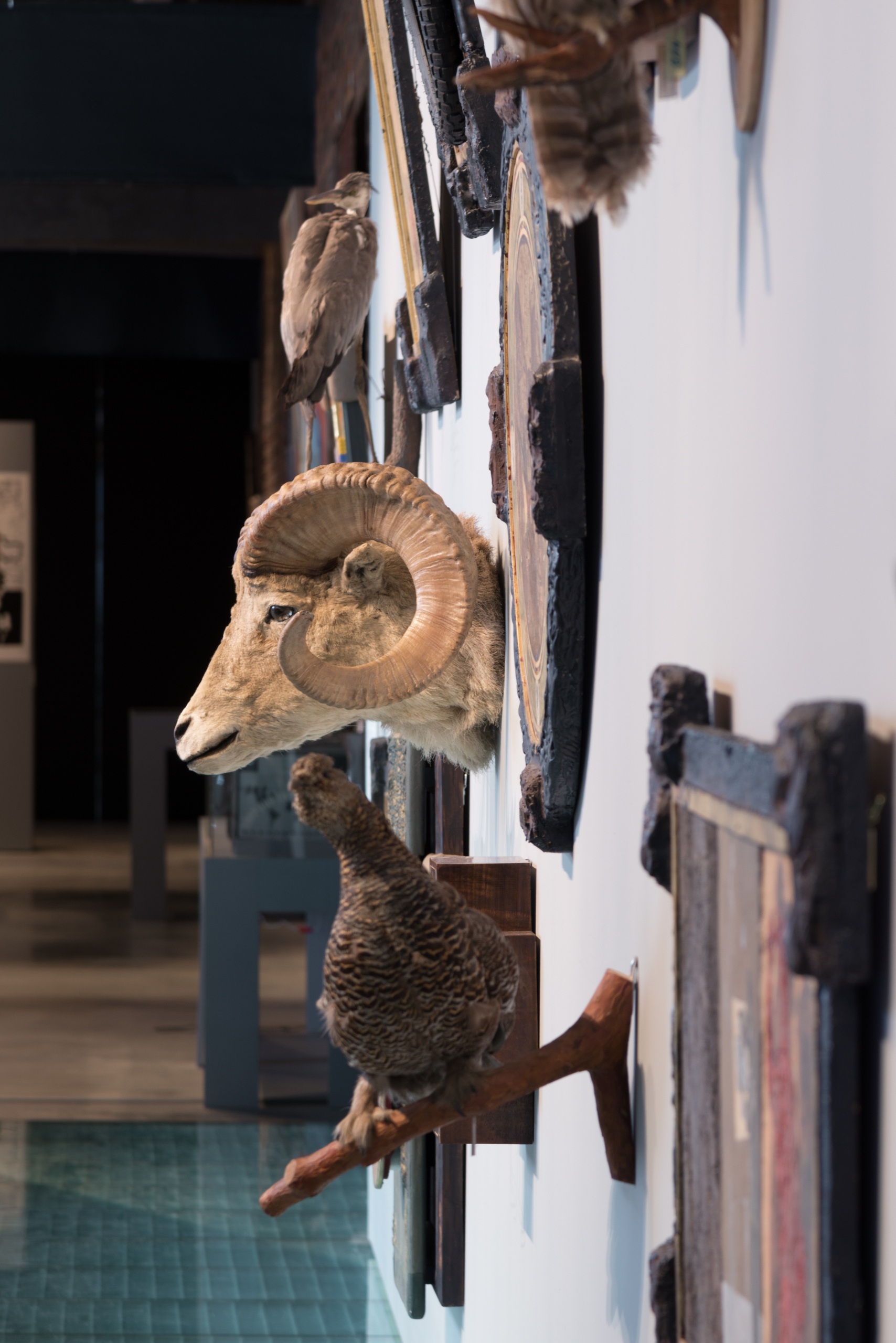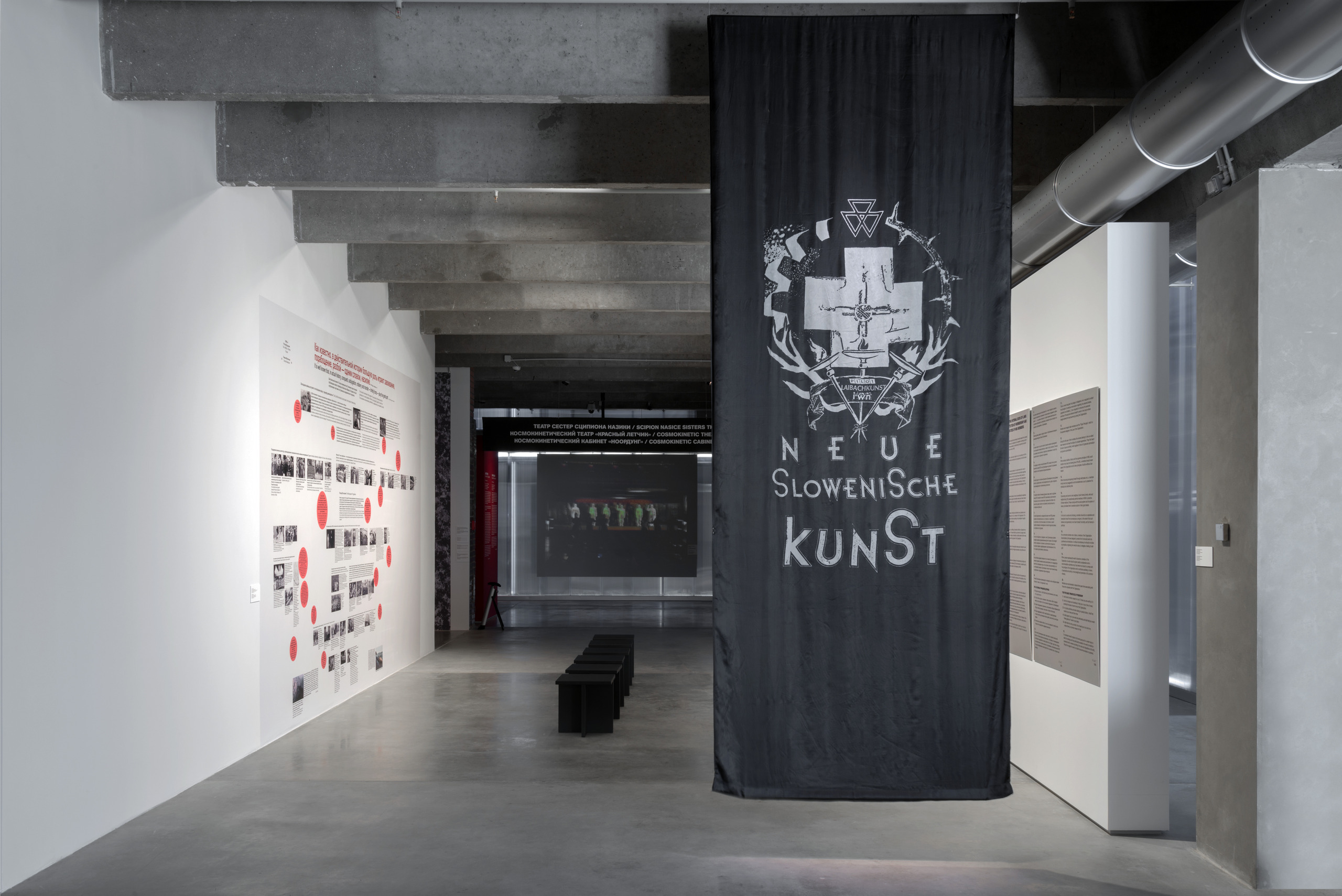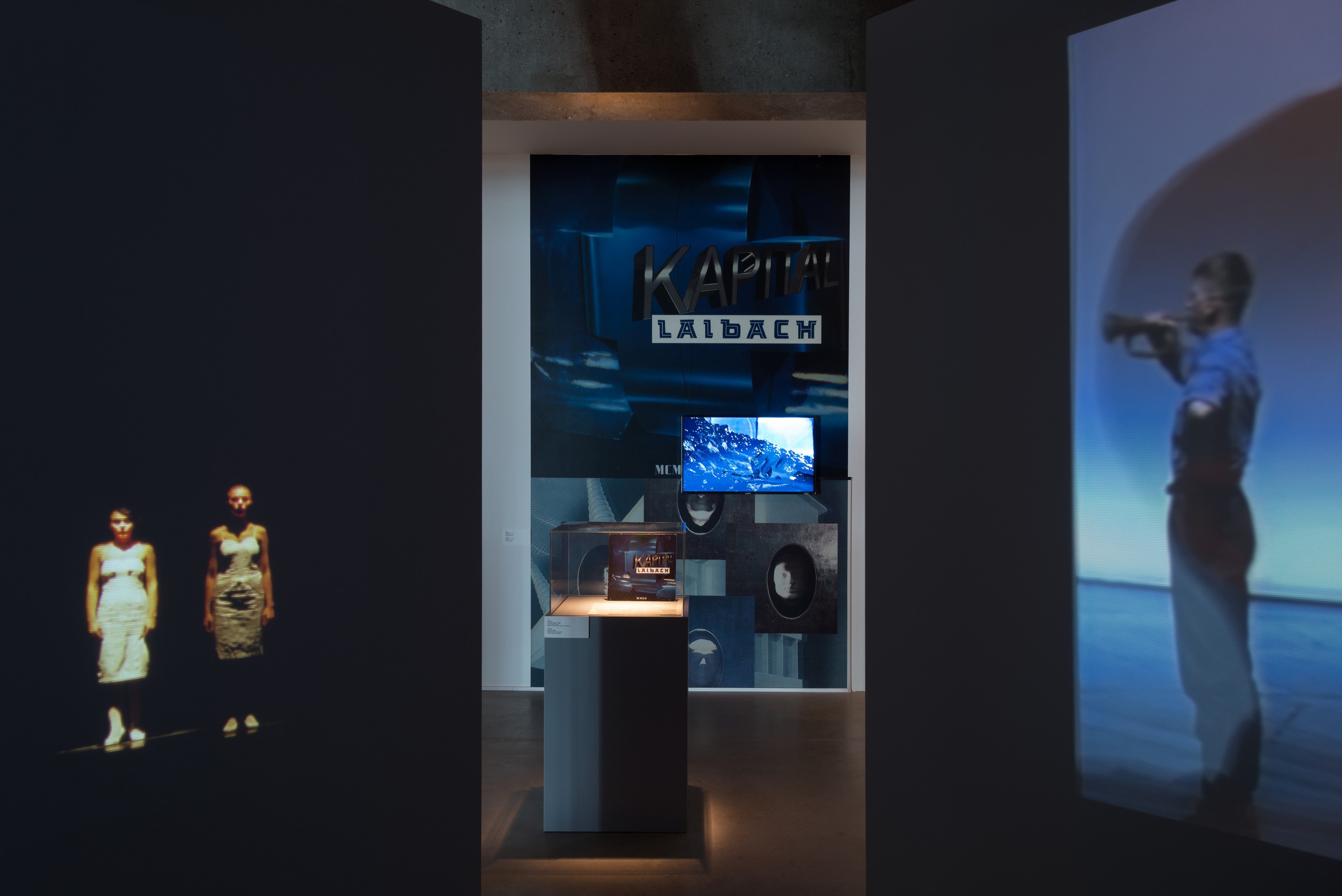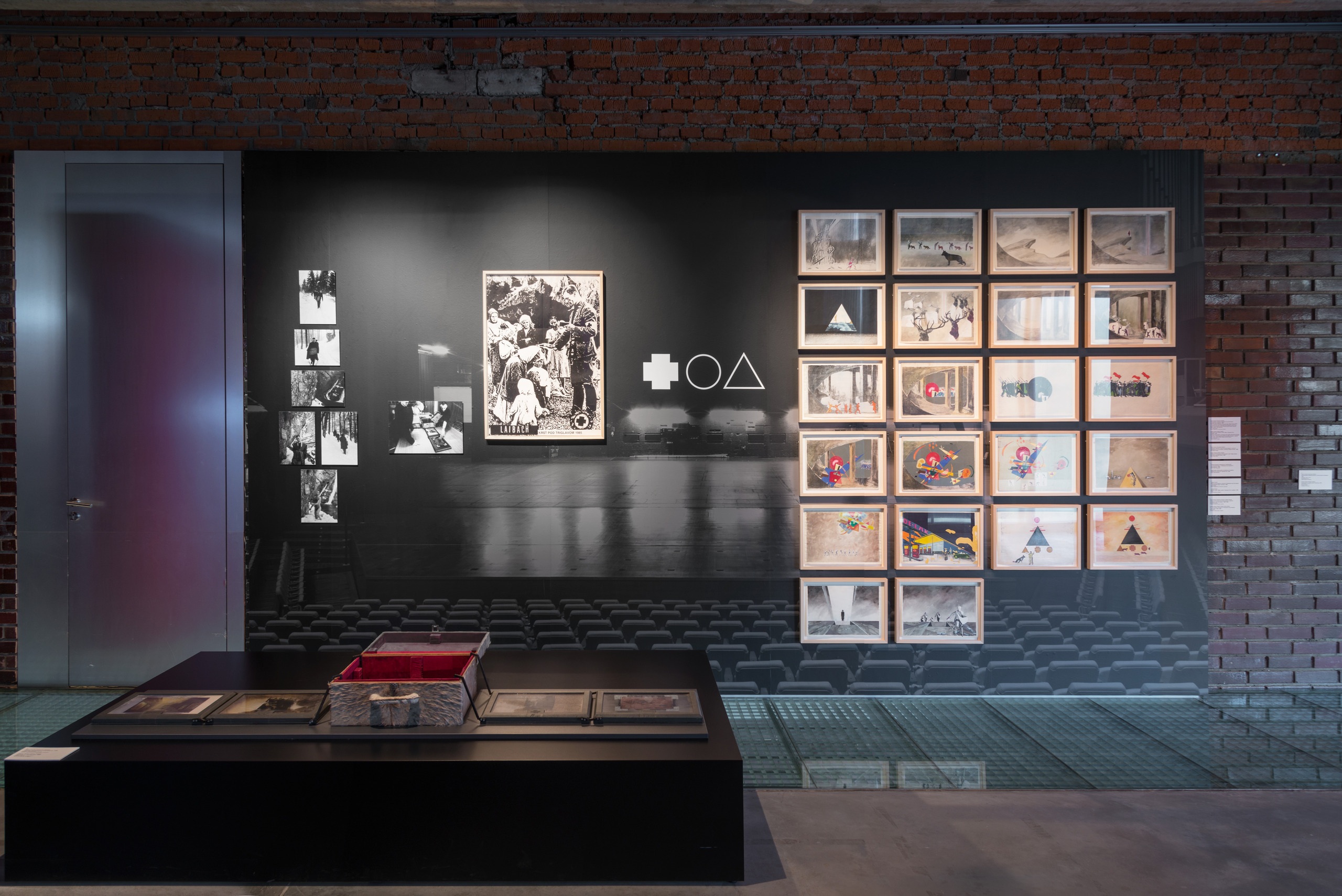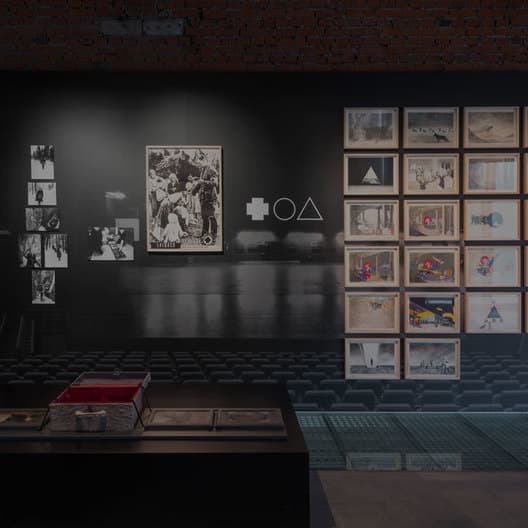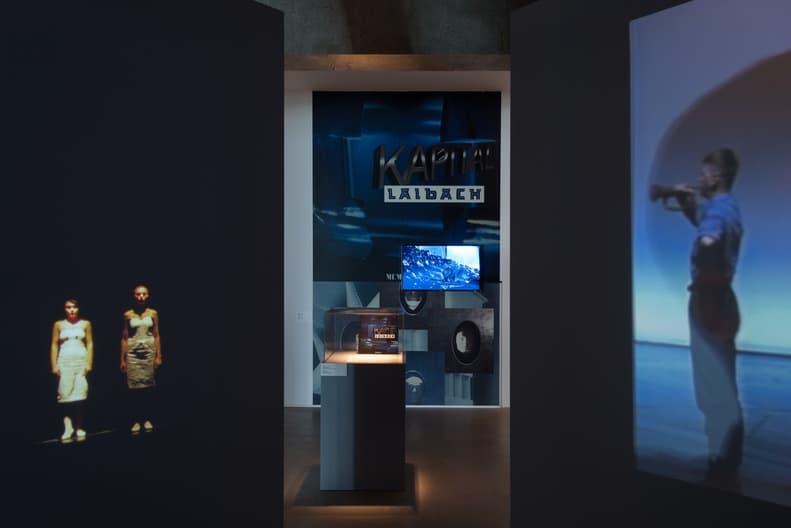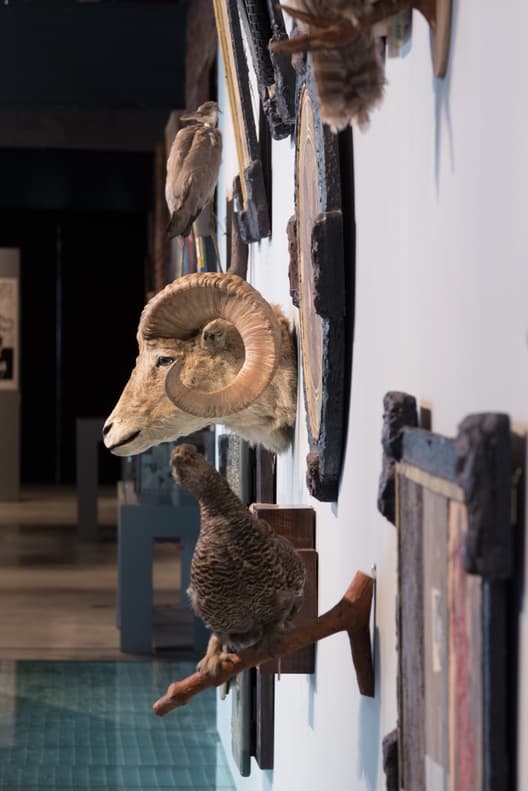Within the exhibition, three sections follow the individual groups, and one is dedicated to the five departments, expanding the way each enacted the core principles of NSK within its own field. A fifth section looks at the key themes the groups critically examined together which, after the breakup of Yugoslavia and the formation of the new state of Slovenia, would lead to the creation of the “NSK State in Time.”
This first exhibition of the NSK collective is placed within the economic and sociopolitical context of the 1980s, a turbulent decade that preceded the collapse of the old world order and heralded the ever-increasing reach of capitalism. As a unique, self–organized alliance formed in response to this situation, NSK gave an atistic proposal for a different system and a different type of institution, developing its own principles of organization, economy, and terminology for the collective’s artistic practices. The proposal they put forward challenges the simplistic binary opposition of socialist versus capitalist ideology, marking NSK as a global cultural phenomenon transcending its specific time and space.
NSK’s aesthetic and vast theoretical output made use of various art traditions, including the ideas of the Russian avant-garde, which experienced a revival in Yugoslavia in the early 1980s. Each group adapted the avant-garde’s utopian tendencies and iconography to produce individual versions of the “retro” method they adopted as an artistic approach.
In the early 1990s, the collective started an intense relationship with the Moscow art scene which, in 1992, resulted in the organization of the NSK Moscow Embassy—a month-long series of lectures and debates—as part of the “NSK State in Time.” Their exhibition in Moscow twenty-four years later can thus be seen as both a symbolic “return” and an homage to the source of the collective’s unique ideological worldview.
The exhibition is accompanied by a free booklet in Russian and English which provides information on the various groups and their works, as well as a comprehensive introduction to the movement. The English language catalogue, NSK: FROM KAPITAL TO CAPITAL: Neue Slowenische Kunst––An Event of the Final Decade of Yugoslavia, edited by Zdenka Badovinac, Eda Čufer, and Anthony Gardner and published by Moderna galerija and MIT Press, will be available for purchase at Garage Bookshop.
NSK: FROM KAPITAL TO CAPITAL is curated by Zdenka Badovinac, Director of Moderna galerija, Ljubljana. It was first presented at the Moderna galerija in 2015, with a second iteration developed for the Van Abbemuseum, Eindhoven as part of the exhibition The 1980s. Today’s Beginnings? held earlier in 2016. Both exhibitions are part of the five-year program The Uses of Art – the Legacy of 1848 and 1989, organized by L’Internationale.
The exhibition at Garage is organized by Snejana Krasteva, Garage Curator.
